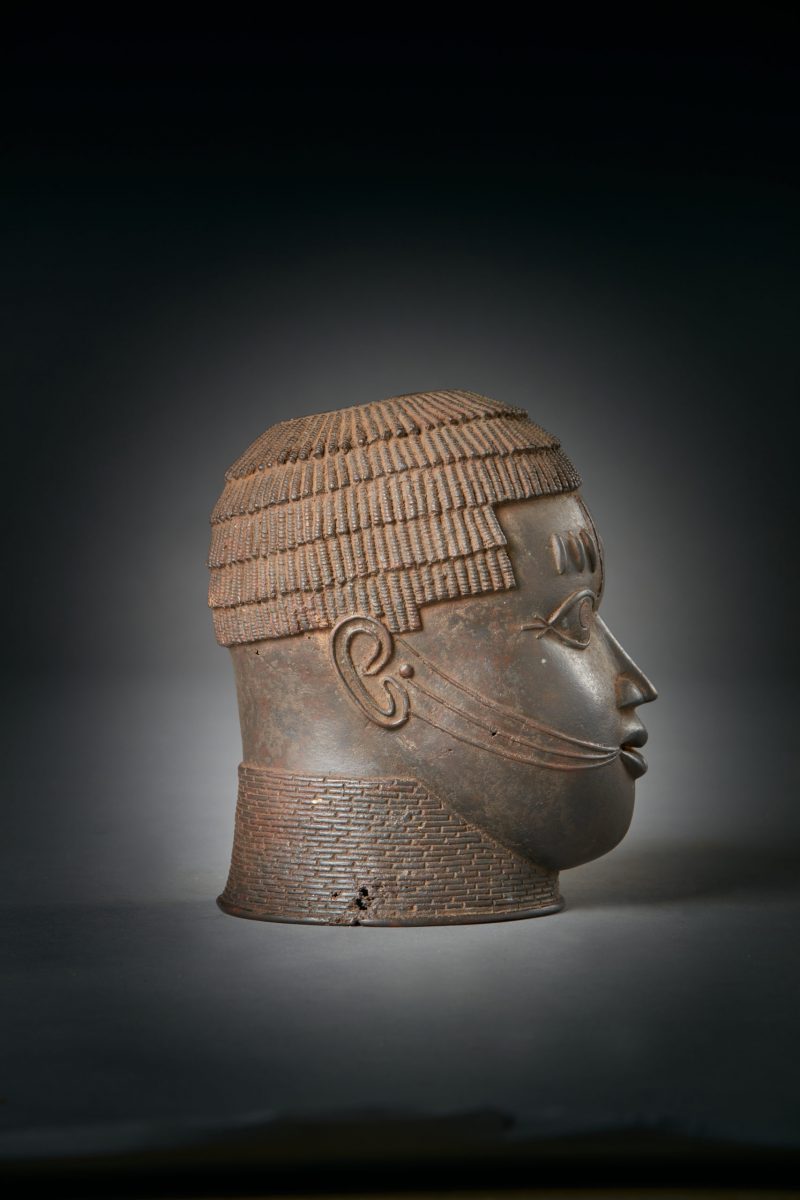Benin Royal Altar Commemorative Head cirça 1531 AD Brass, bronze, iron
Benin Royal Altar Commemorative Head 1531 AD Brass, bronze, iron 9 x 6 x 7 in 23 x 15 x 18 cm Benin people; Nigeria, West Africa The features depicted on these types of effigy heads don’t necessarily represent a commemorative Benin king, but rather effigies of conquered rulers. These objects were displayed on war shrines as trophies of victory. This type of altar head would have normally housed a carved ivory elephant tusk which would have extended from the crown or top opening of the head. Most Benin art forms feature or depict kings or secondary court officials, chiefs, warriors, or musicians. The tradition of casting commemorative heads dates back to and was founded by a Yoruba prince originally from the region of Ife. The lost-wax casting process is a technique used by Benin sculptors to form the shape of the effigy head in a heat-resistant clay-core. This core is then covered with a layer of wax, in which the sculptor models, carves, and incises an image. Secondly, a thin layer of finely ground liquid clay is painted over the wax model then covered with increasingly thicker layers of clay. When the clay is completely dry, the assembly is heated to melt out the wax leaving an empty image or mold of the sculpted image of the head; for the hot molten metal to be filled in where the wax was and hot metal is poured into the mold. The sculptor must turn the complete assembly upside down to pour the hot molten metal, which is generally a mixture of copper alloys or brass. When the molten metal has cooled, the outer clay casing and inner clay core are broken to remove the casted sculpture or head. The effigy’s coiffure consists of five braided rows of plaits; the forehead has two rows of three vertical incised tribal scarifications extending from the mouth to the ears. With the center forehead and eyes inlaid with two strips of iron inlay. The collar on the neck represents a stylized coral bead necklace. Provenance: This artifact is an extremely rare and important archeological find from the Benin civilization. The époque of the Benin civilization is presumed to be from the classic period to between the 13th–16th centuries. The results of thermoluminescence testing (report number 16R030519) conducted by the Kotalla Laboratory research facilities in Germany reports that sampling taken from the core of the cast and on the inside of the nose and eyes shows that this artifact was last fired into its present construction approximately 490-500 years ago, with an actual date reported as 1531 AD, which is consistent with the suggested period of the Benin civilization. later purchased by Maxwell Price
